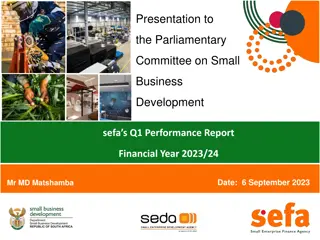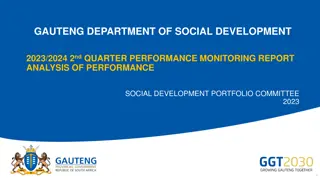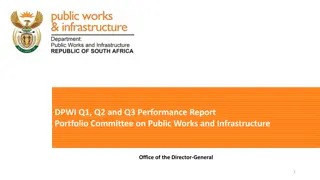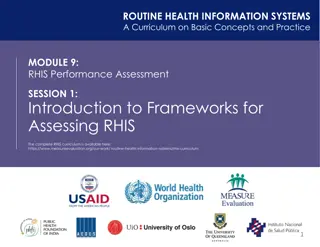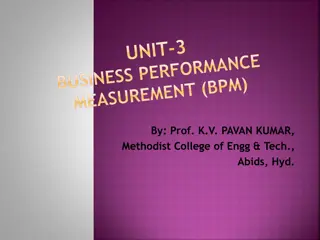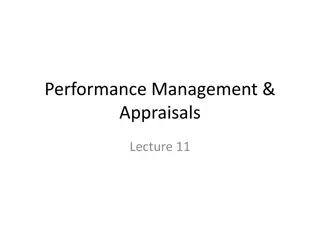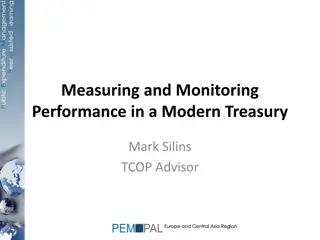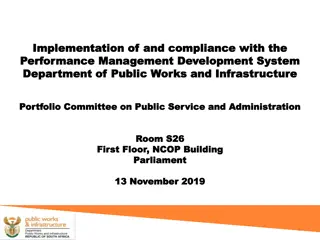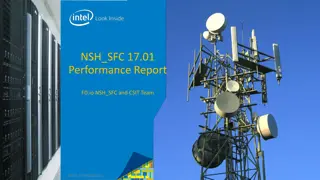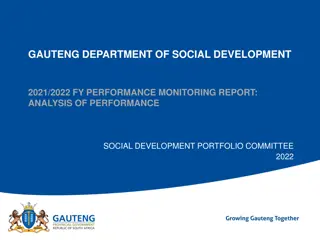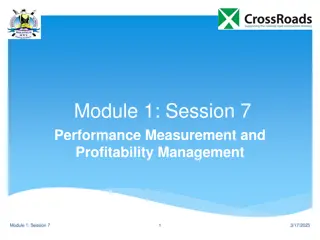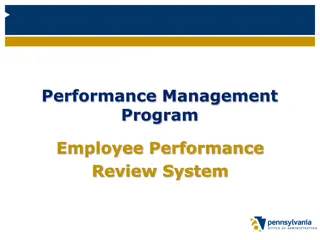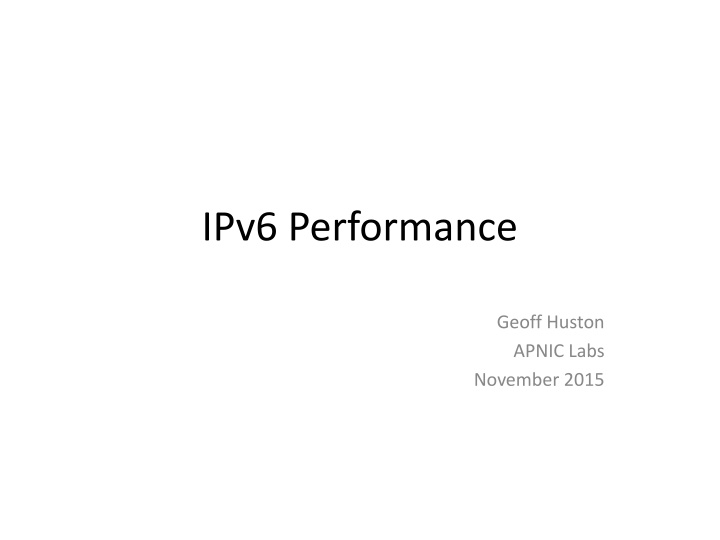
IPv6 Performance Analysis: Reliability and Speed Insights
Explore the reliability and speed of IPv6 connections based on measurement techniques, connection failures, and comparative data sets across 2011 and 2015. Understand the evolution of IPv4 relative failure rates over time.
Download Presentation

Please find below an Image/Link to download the presentation.
The content on the website is provided AS IS for your information and personal use only. It may not be sold, licensed, or shared on other websites without obtaining consent from the author. If you encounter any issues during the download, it is possible that the publisher has removed the file from their server.
You are allowed to download the files provided on this website for personal or commercial use, subject to the condition that they are used lawfully. All files are the property of their respective owners.
The content on the website is provided AS IS for your information and personal use only. It may not be sold, licensed, or shared on other websites without obtaining consent from the author.
E N D
Presentation Transcript
IPv6 Performance Geoff Huston APNIC Labs November 2015
What are we looking at: How reliable are IPv6 connections? How fast are IPv6 connections?
What are we looking at: How reliable are IPv6 connections? How fast are IPv6 connections?
The Measurement Technique Embed a script in an online ad Have the script generate a set of URLs to fetch Examine the packets seen at the server to determine reliability and RTT
What are we looking at: How reliable are IPv6 connections? How fast are IPv6 connections?
Connection Failure Outbound SYN client server Busted SYN ACK Return path
Compare two data sets The first data set has been collected across 2011 Teredo and 6to4 were still active as IPv6 mechanisms Little in the way of other IPv6 services The second data set has been collected across 2015 Missing comparative IPv4 data for the period September October
2011 - Relative Connection Failure Rates And why is the V4 relative failure rate dropping over time?
What is going on with IPv4? The failure rate for V4 decreases as the volume of experiments increases which implies that the number of naked SYNs being sent to the servers is not related to the number of tests being performed. Aside from residual IPv4 failures in the image fetch due to device resets, connection dropouts, etc, the bulk of the recorded failures here is probably attributable to researchers bots doing all-of-address scanning on port 80
What is going on with IPv4? Syn attacks? bot scanning on port 80?
What about IPv6? Local Miredo Relay Failures Why is the base failure rate of all IPv6 connections sitting at 40%? This is amazingly bad!
V6 Failure Rate by Address Type Teredo All V6 Average 6 to 4 Unicast
6to4 Failure is Local Failure 6to4 failure appears to be related to two factors: 1. The client s site has a protocol 41 firewall filter rule for incoming traffic (this is possibly more prevalent in AsiaPac than in Europe) 2. Load / delay / reliability issues in the server s chosen outbound 6to4 relay (noted in the data gathered at the US server) Even so, the 10% to 20% connection failure rate for 6to4 is unacceptably high!
V6 Unicast Failures January March 2012: 110,761 successful V6 connecting endpoints 6,227 failures That s a failure rate of 5.3%! 7 clients used fe80:: link local addresses 7 clients used fc00:/7 ULA source addresses 2 clients used fec0::/16 deprecated site local addresses 16 clients used 1f02:d9fc::/16 Nobody used 3ffe::/16 prefixes!
Data Set 2: Connection Failure in 2015 January November 2015 24,212,563 IPv6 endpoints 352,919 Failure rate (4.1%)
Daily IPv6 Failures RIP Flash! HTML5 + TLS + Mobile Devices
6to4 6,634,660 6to4 endpoints 27% of all IPv6 used 6to4 9% failure rate within the set of 6to4 connections
Daily IPv6 Failures 6to4 failure rate has improved from 15%-20% in 2011 to 9% in 2015 Teredo has all but disappeared Unicast failure rate is between 1.5% and 4% in 2015 Current unicast failure rate is 2%
Origin ASs with High IPv6 Failure Rates AS Failure Samples AS Name Rate AS13679 99.69% 318 Centros Culturales de Mexico, A.C., MX AS201986 94.74% 133 ARPINET Arpinet LLC, AM AS5511 90.68% 161 OPENTRANSIT Orange S.A., FR AS20880 72.56% 962 TELECOLUMBUS Tele Columbus AG, DE AS17660 57.06% 1,041 DRUKNET-AS DrukNet ISP, BT AS21107 46.64% 7,564 BLICNET-AS Blicnet d.o.o., BA AS4755 40.82% 316 TATACOMM-AS TATA Communications formerly VSNL is Leading ISP, IN AS37992 40.25% 159 THAMMASAT-BORDER-AS Thammasat University in thailand, TH AS28580 39.64% 1,158 CILNET Comunicacaoe Informatica LTDA., BR AS17412 35.58% 163 WOOSHWIRELESSNZ Woosh Wireless, NZ AS52207 33.62% 931 TULA-AS JSC "ER-Telecom Holding", RU AS4796 32.61% 414 BANDUNG-NET-AS-AP Institute of Technology Bandung, ID AS30036 30.59% 17,001 MEDIACOM-ENTERPRISE-BUSINESS - Mediacom Communications Corp, US AS9329 29.35% 184 SLTINT-AS-AP Sri Lanka Telecom Internet, LK AS7477 28.10% 153 TEREDONN-AS-AP SkyMesh Pty Ltd, AU AS52888 25.79% 190 UNIVERSIDADE FEDERAL DE SAO CARLOS, BR AS28343 24.52% 681 TPA TELECOMUNICACOES LTDA, BR AS210 22.27% 247 WEST-NET-WEST - Utah Education Network, US AS29632 19.25% 239 NASSIST-AS NetAssist LLC, UA AS20857 18.10% 105 TRANSIP-AS TransIP B.V., NL
Origin ASs with Zero Failure Rates AS3223 AS16265 AS24961 AS39832 AS2686 AS33070 AS55536 AS21191 AS22584 AS32780 AS29854 AS18144 AS12510 AS21837 AS13213 AS9619 AS19994 AS32934 AS25513 AS2614 0.00% 3,138 VOXILITY Voxility S.R.L., RO 0.00% 2,761 LEASEWEB-NETWORK LeaseWeb Network B.V., NL 0.00% 2,644 MYLOC-AS myLoc managed IT AG, DE 0.00% 1,945 NO-OPERA Opera Software ASA, NO 0.00% 1,824 ATGS-MMD-AS - AT&T Global Network Services, LLC, US 0.00% 1,633 RMH-14 - Rackspace Hosting, US 0.00% 1,351 PSWITCH-HK PACSWITCH GLOBAL IP NETWORK, HK 0.00% 1,210 ASN-SEVERTTK Closed Joint Stock Company TransTeleCom, RU 0.00% 1,165 NTELOS-PCS - Ntelos Inc., US 0.00% 1,119 HOSTINGSERVICES-INC - Hosting Services, Inc., US 0.00% 1,039 WESTHOST - WestHost, Inc., US 0.00% 974 AS-ENECOM Energia Communications,Inc., JP 0.00% 762 SAP_AG_WDF SAP SE, DE 0.00% 757 OPERASOFTWARE - Opera Software Americas LLC, US 0.00% 741 UK2NET-AS UK2 - Ltd, GB 0.00% 672 SSD Sony Global Solutions Inc., JP 0.00% 660 RACKSPACE - Rackspace Hosting, US 0.00% 654 FACEBOOK - Facebook, Inc., US 0.00% 639 ASN-MGTS-USPD OJS Moscow city telephone network, RU 0.00% 608 ROEDUNET Agentia de Admin a Retelei Nationale de Informatica Educatie si Cercetare, RO
Origin ASs with Zero Failure Rates AS3223 AS16265 AS24961 AS39832 AS2686 AS33070 AS55536 AS21191 AS22584 AS32780 AS29854 AS18144 AS12510 AS21837 AS13213 AS9619 AS19994 AS32934 AS25513 AS2614 0.00% 3,138 VOXILITY Voxility S.R.L., RO 0.00% 2,761 LEASEWEB-NETWORK LeaseWeb Network B.V., NL 0.00% 2,644 MYLOC-AS myLoc managed IT AG, DE 0.00% 1,945 NO-OPERA Opera Software ASA, NO 0.00% 1,824 ATGS-MMD-AS - AT&T Global Network Services, LLC, US 0.00% 1,633 RMH-14 - Rackspace Hosting, US 0.00% 1,351 PSWITCH-HK PACSWITCH GLOBAL IP NETWORK, HK 0.00% 1,210 ASN-SEVERTTK Closed Joint Stock Company TransTeleCom, RU 0.00% 1,165 NTELOS-PCS - Ntelos Inc., US 0.00% 1,119 HOSTINGSERVICES-INC - Hosting Services, Inc., US 0.00% 1,039 WESTHOST - WestHost, Inc., US 0.00% 974 AS-ENECOM Energia Communications,Inc., JP 0.00% 762 SAP_AG_WDF SAP SE, DE 0.00% 757 OPERASOFTWARE - Opera Software Americas LLC, US 0.00% 741 UK2NET-AS UK2 - Ltd, GB 0.00% 672 SSD Sony Global Solutions Inc., JP 0.00% 660 RACKSPACE - Rackspace Hosting, US 0.00% 654 FACEBOOK - Facebook, Inc., US 0.00% 639 ASN-MGTS-USPD OJS Moscow city telephone network, RU 0.00% 608 ROEDUNET Agentia de Admin a Retelei Nationale de Informatica Educatie si Cercetare, RO
IPv6 Failures Q3 2015 279,116 failing IPv6 addresses 143,357 6to4 addresses 118 teredo addresses 92 fe80:: local scope addresses 709 unallocated addresses 1,358 unannounced addresses 133,482 addresses from unicast allocated routed space 102,826 unique /64s
What about IPv4 Connection Failures? 2011: failure rate 0.2%
What about IPv4 Connection Failures? 2011: failure rate 0.2% 2015: 334,957,192 IPv4 endpoints 1,197,903 Connection Failures (0.3%)
IPv4 Connection Failure Missing PCAP data
Its still not good! IPv6 Unicast Failure rate: 1.8% (steady) IPv4 Failure rate: 0.2% (and falling!)
What are we looking at: How reliable are IPv6 connections? How fast are IPv6 connections?
Why SYNs? Every TCP session starts with a SYN handshake Its typically a kernel level operation, which means that there is little in the way of application level interaction with the SYN exchange On the downside there is only a single sample point per measurement
Generating a comparative RTT profile For each successful connection couplet (IPv4 and IPv4) from the same endpoint, gather the pair of RTT measurements from the SYN- ACK exchanges Use the server s web logs to associate a couplet of IPv4 and IPv6 addresses Use the packet dumps to collect RTT information from the SYN-ACK Exchange Plot the difference in RTT in buckets
2012 Data IPv6 is faster IPv6 is slower Number of samples (log scale) 6 to 4 Teredo Unicast RTT Difference (in fractions of a second)
2015 Data November 2015 IPv6 is faster IPv6 is slower Number of samples (log scale) Unicast RTT Difference (in fractions of a second)
2015 Data November 2015 IPv6 is faster IPv6 is slower Number of samples (log scale) 6 to 4 RTT Difference (in fractions of a second)
2015 Data November 2015 IPv6 is faster IPv6 is slower Number of samples (log scale) 6 to 4 Unicast RTT Difference (in fractions of a second)
2015 Data CDF (using 10ms resolution) IPv6 is faster IPv6 is slower Proportion of samples 6 to 4 Unicast RTT Difference (in fractions of a second)
2015 Data CDF (using 10ms resolution) IPv6 is faster IPv6 is slower Proportion of samples 24% of samples unicast IPv6 is more than 1/100 sec slower than IPv4 6 to 4 Unicast 18% of samples unicast IPv6 is more than 1/100 sec faster than IPv4 RTT Difference (in fractions of a second)
2015 Data CDF (using 0.1 ms resolution) IPv6 is slower IPv6 is faster Proportion of samples 6 to 4 Unicast RTT Difference (in fractions of a second)


